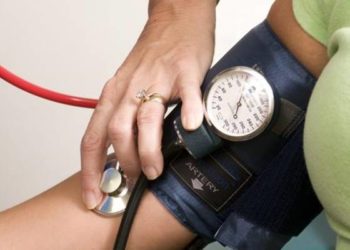2 Minute Medicine Rewind January 13, 2025
Association of varicose veins with the risk of heart failure: A nationwide cohort study
1. Patients with varicose veins had a higher risk of heart failure than those without varicose veins.
Evidence Rating Level: 2 (Good)
Varicose veins (VV) are a type of chronic venous disease, characterized by enlarged and twisted superficial veins in the lower limbs. Emerging evidence suggests a possible link between chronic venous disease and an increased risk of heart failure; however, research on this association is still limited. This retrospective cohort study thus investigated the relationship between VV and incidence risk of heart failure. This study analyzed participants from the South Korean National Health Insurance Service-Health Screening (NHIS-HEALS) database who underwent health screening between 2005 and 2010. To balance baseline characteristics, propensity score matching (PSM) at a ratio of 1:5 was employed to match participants in the VV with those in the non-VV group. In total, 390,436 participants were included in the study (mean age (SD) = 56.0 ± 9.3 years, male (%) = 211,949 (54.3%), mean BMI (SD) = 24.0 ± 2.9 kg/m2), of which 5,008 (1.28%) had VV. The median follow-up period was 13.33 years (interquartile range 10.4–16.26), during which 55,023 cases of heart failure (14.0%) were reported. Multivariable analysis revealed that the VV group had a 17% greater incidence risk of heart failure compared to the group without VV, both before and after PSM (before PSM: hazard ratio [HR], 1.174; 95% confidence interval [CI], 1.089–1.265; after PSM: HR, 1.171; 95% CI, 1.070–1.283). Landmark analysis using a start time of 1 year after the index date found similar results for the VV group before and after PSM (before PSM: HR, 1.190; 95% CI, 1.103–1.285; after PSM: HR, 1.144; 95% CI, 1.044–1.254). Among participants in the VV group, no difference in heart failure occurrence was observed between those who received treatment and those who did not. Overall, this study found VV to be associated with an increased risk of heart failure among the general Korean population. Future research should explore the pathophysiological mechanisms underlying this association.
1. 6 weeks of tai chi chuan combined with 1-Hz repetitive transcranial magnetic stimulation (rTMS) was superior to improving sleep quality and cognitive function than sham rTMS in older adults with sleep disorders and mild cognitive impairment.
Evidence Rating Level: 1 (Excellent)
Among older adults, sleep disorders represent an independent risk factor for mild cognitive impairment (MCI). Tai chi chuan and repetitive transcranial magnetic stimulation (rTMS) have each been shown to improve sleep quality by affecting the prefrontal frontal cortex (PFC) and promoting neural plasticity. Although some evidence suggests that combining rTMS with tai chi chuan may enhance brain benefits to improve sleep quality, large-scale randomized clinical trials are lacking. This double-blind, sham-controlled, 2-arm randomized clinical trial thus examined whether 1-Hz rTMS of the right dorsolateral PFC would enhance clinical benefits of tai chi chuan in improving sleep quality and cognitive function among older adults with sleep disorders and MCI. 110 adults aged 60 to 75 years with sleep disorders and MCI were recruited and randomized 1:1 to either the experimental group (tai chi chuan and 1-Hz rTMS) or sham group (tai chi chuan and sham rTMS). Participants underwent 60-minute tai chi chuan training sessions and 20-minute active or sham rTMS sessions, 5 times per week for 6 weeks. Sleep quality and cognitive function were assessed at baseline, after the 6-week intervention, and at the 12-week. Subjective sleep quality was assessed using the Pittsburgh Sleep Quality Index (PSQI) (lower scores indicating healthier sleep quality), and global cognitive function was assessed using the Montreal Cognitive Assessment (MoCA) (higher scores indicating less cognitive impairment). Of the 110 participants randomized (mean [SD] age, 67.9 [4.6] years; 68 female [61.8%]), 103 participants completed the 6-week intervention and 12-week follow-up assessment. Compared to the sham group 6 weeks post-intervention, the experimental group had lower PSQI scores (between-group mean difference, −3.1 [95% CI, −4.2 to −2.1]; P < .001) and higher MoCA scores (between-group mean difference, 1.4 [95% CI, 0.7-2.1]; P < .001). Similar results were observed at the 12-week follow-up. An interaction effect was observed between the PSQI score (mean difference, −2.1 [95% CI, −3.1 to −0.1]; P < .001) and the MoCA total score (mean difference, 0.9 [95% CI, 0.1-1.6]; P = .01). Seven nonserious adverse events unrelated to the intervention were reported, with no significant differences between the two study groups. Overall, the study found that tai chi chuan combined with 1-Hz rTMS improved subjective sleep quality and global cognitive function, providing insight into nonpharmacologic strategies for treating sleep disorders and preventing MCI.
Atrial Fibrillation and Retinal Stroke
1. Atrial fibrillation was associated with an increased hazard rate of retinal stroke.
Evidence Rating Level: 2 (Good)
Atrial fibrillation (AF) is the most common cardiac arrhythmia and increases the risk of stroke. It is unknown whether AF is also associated with the risk of retinal stroke, a rare type of ischemic stroke that can result in loss of eyesight. As risk factors for retinal stroke remain poorly understood, this retrospective cohort study thus examined the association between AF and retinal stroke. Data was collected from a sample of Medicare beneficiaries between 2000 and 2020. Medicare beneficiaries aged 66-90 years were included and those with AF were matched 1:1 with an AF-free control patient. In total, 1,090,144 patients (mean [SD] age, 76.92 [7.09] years, 591,400 females [54.3%]) were included in the study, of which 545,072 had AF and 545,072 were matched controls. During the follow-up period (median = 45 months, interquartile range = 18-90), 1,333 patients with AF (rate = 0.55 per 1000 person-years) and 1,082 AF-free matched controls (rate = 0.50 per 1000 person-years) experienced retinal stroke. Compared to AF-free patients, those with AF had a 14% greater hazard of retinal stroke (cause-specific hazard ratio (HR), 1.14 (95% CI, 1.02 to 1.28); adjusted rate difference, 0.05 [95% CI, −0.01 to 0.11]). Those with AF also had a 73% greater hazard of cerebral ischemic stroke (adjusted HR, 1.73 [95% CI, 1.69 to 1.76]; adjusted rate difference, 10.11 [95% CI, 9.72 to 10.49]). Although AF was not associated with central retinal vein occlusion, it was associated with urinary tract infection, cataract, and humeral fracture. Overall, this study found that AF was associated with an increased hazard of retinal stroke. Due to the small magnitude of association, future studies are warranted to confirm these results.
1. High levels of albumin corrected anion gap at intensive care unit admission are an independent risk factor for poor short-term prognosis, associated with increased all-cause mortality at 14 and 30 days in elderly patients with acute kidney injury caused or accompanied by sepsis.
Evidence Rating Level: 2 (Good)
Acute kidney injury (AKI) has been linked to worse prognoses especially when caused or accompanied by sepsis. As advancing age is associated with poor health outcomes in both AKI and sepsis, there is a need for timely identification of elderly AKI patients with sepsis to facilitate early intervention. A newly identified inflammatory marker called albumin corrected anion gap (ACAG) has been linked with patient mortality for various conditions including sepsis and AKI. As the pathophysiological mechanisms of AKI with sepsis are poorly understood, this retrospective cohort study investigated the relationship between ACAG levels and short-term prognosis in elderly patients with AKI caused or accompanied by sepsis. This study included elderly patients (> 65 years) from a database of individuals admitted to the intensive care unit (ICU) at Beth Israel Deaconess Medical Center between 2008 and 2019. Patients were divided into death and survival groups based on a 14-day prognosis and categorized into a normal ACAG level group (12–20 mmol/L) and a high ACAG level group (> 20 mmol/L). In total, 3,741 patients were included in the study (mean age (SD) = 78.06 ± 8.17 years, male (%) = 2,055 (54.93%)), with 927 in the death group and 2,814 in the survival group. The 14-day all-cause mortality rate was 24.78% and 30-day all-cause mortality rate was 34.11%. Both 14-day and 30-day all-cause mortality rates were higher in patients with high ACAG levels compared to those with normal ACAG levels (32.13% vs 18.88%, χ2 = 87.023, P < 0.001; 42.34% vs 27.50%, χ2 = 90.508, P < 0.001). Elevated ACAG levels on ICU admission were identified as an independent risk factor for short-term mortality, with hazard ratios (HR) of 1.367 (95% CI: 1.191–1.569, P < 0.001) at 14 days and 1.297 (95% CI: 1.154–1.457, P < 0.001) at 30 days. The association between ACAG levels and mortality risk at 14 and 30 days was non-linear (χ2 = 18.220, P < 0.001; χ2 = 18.360, P < 0.001). Compared to patients with normal ACAG levels, those with high ACAG levels also had lower cumulative survival rates at 14 and 30 days (P < 0.001). Subgroup analyses found that the association between ACAG levels and 14-day mortality was more pronounced in patients without cerebrovascular disease or acute pancreatitis (P < 0.05 for interaction). Overall, this study identified elevated ACAG levels at ICU admission as an independent risk factor for poor short-term prognosis, significantly increasing 14- and 30-day all-cause mortality in elderly patients with AKI caused or accompanied by sepsis. The results suggest that monitoring ACAG levels in elderly patients may be important for the timely identification of those at higher risk of adverse outcomes.
1. 12 weeks of Lacticaseibacillus paracasei MSMC39-1 and Bifidobacterium animalis TA-1 probiotics reduced risk factors associated with metabolic syndrome.
Evidence Rating Level: 1 (Excellent)
An imbalance in the gut microbiota can contribute to metabolic issues and potentially the development of metabolic syndrome. Probiotics can regulate the gut microbiome and have been shown to improve metabolic functions such as enhancing lipid metabolism, reducing cholesterol, reducing inflammatory mediators, and increasing insulin sensitivity, among others. Given the limited research on the effects of probiotics on metabolic syndrome, this double-blinded, randomized, controlled trial investigated the efficacy of the probiotics Lacticaseibacillus paracasei MSMC39-1 (L. paracasei MSMC39-1) and Bifidobacterium animalis TA-1 (B. animalis TA-1) in modulating gut microbiota and reducing risk factors of metabolic syndrome. Sixty participants (18-60 years) meeting the inclusion criteria for metabolic syndrome risk factors were recruited and randomly assigned to one of two groups. The probiotics group received probiotic tablets (L. paracasei MSMC39-1 and B. animalis TA-1, each at 1.0 × 10⁹ CFU), while the placebo group received placebo tablets. Each group consumed five tablets daily for 12 weeks. Due to two participants lost to follow-up, 58 participants were included in the analysis, with 31 in the probiotics group (mean age 42.29 ± 7.39 years, female (%) = 22 (71%)) and 27 in the placebo group (43.89 ± 7.54 years, female (%) = 19 (70%)). At 12 weeks, the probiotics group experienced a greater reduction in low-density lipoprotein-cholesterol levels (-39.97 ± 26.83 mg/dl) compared to the placebo group (-4.96 ± 22.02) (p < 0.001). The probiotics group also experienced greater reductions in body weight, body mass index, waist circumference, systolic blood pressure, and total cholesterol from baseline compared to the placebo group (p < 0.05). Gut microbiome analysis revealed greater dissimilarity between pre- and post-intervention gut microbiomes in the probiotics group (p = 0.05). Bacterial taxonomic composition showed that gut microbiomes of the post-intervention probiotic group had a greater abundance of short-chain fatty acid-producing gut microorganisms, including Blautia, Roseburia, Collinsella, and Ruminococcus, compared to the placebo group. Furthermore, microbial functional analysis found the probiotics group to have increases in ATP-binding cassette transporters, ribonucleic acid transport, biosynthesis of unsaturated fatty acids, glycerophospholipid metabolism, and pyruvate metabolism. Overall, this study found that L. paracasei MSMC39-1 and B. animalis TA-1 probiotics reduced risk factors associated with metabolic syndrome, supporting the role of probiotics in metabolic regulation.
Image: PD
©2024 2 Minute Medicine, Inc. All rights reserved. No works may be reproduced without expressed written consent from 2 Minute Medicine, Inc. Inquire about licensing here. No article should be construed as medical advice and is not intended as such by the authors or by 2 Minute Medicine, Inc.







